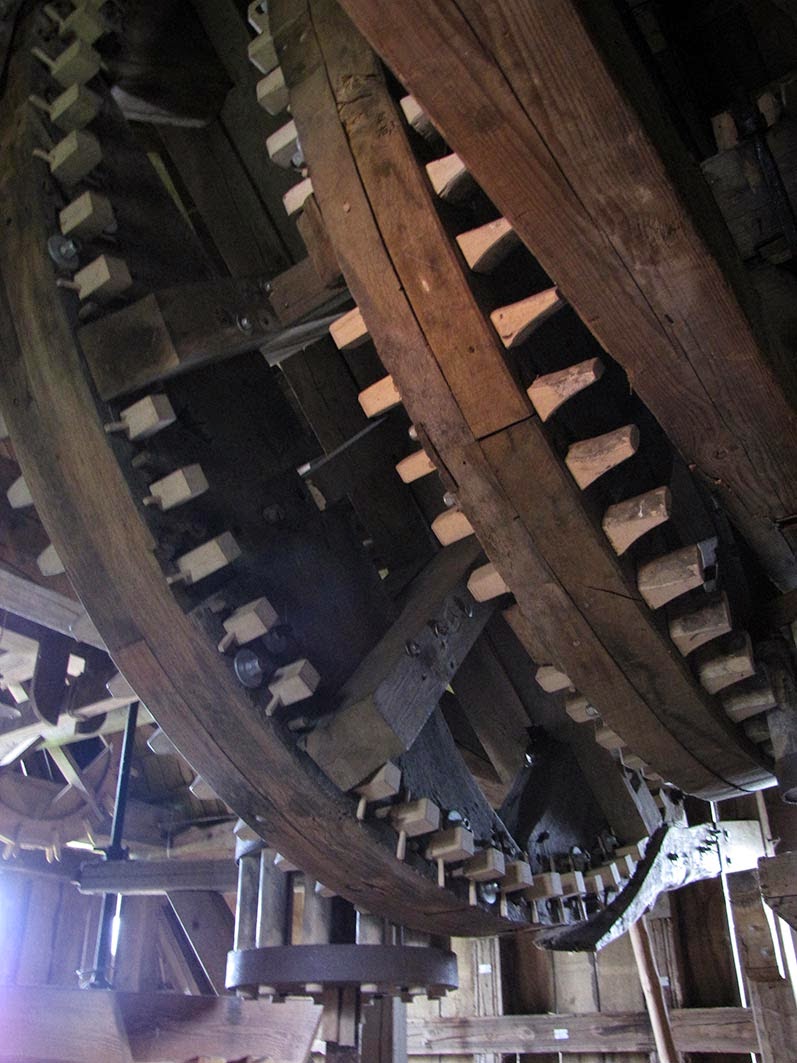June 4th,
Now for some history and some honest hard work. Not us working, that wouldn't do, but watching and imagining hard work, that we can do. Actually I did get roped into doing some work. More about that later.
Steep valleys and fast running streams translate into power - water power. And on the hill tops, wind power. This region of Germany, the Maerkischerkreiss, is well known in the middle ages through the last century for crafting all types of metal; from handmade nails to brass embossed sheets to large kettles to weapons. The metal ores are here as is plenty of hard wood forests, and importantly water mills to drive the machines.
Reliving this history and getting a perspective of what it would be like to live and work in this era is today's outing.
 |
| Not far from Luedenscheid is this open air museum that shows how they took advantage of the narrow valley and the swift flowing river. |

 |
| Most of these structures are manufacturing on the first and second floors and homes above. The road is on the front of the houses, the river is behind with water being channeled off to power the water mills that power the tools. |
 |
| Every hundred meters or so the river is dammed to better control the water flow to the water mills. |
 |
| Big water wheel driving the metal working tools inside. |
 |
| These giant hammers were used to shape large metal bowls. |
 |
| Most other crafts necessary for the village to survive were also shown and in this case demonstrated. |
 |
| The rope maker recruited me to turn the handle as he threaded and wove the threads together to form the rope. Turning the handle was within my skill range. |
 |
| Not as cute as the windmills of Holland, but nevertheless really cool. |
 |
| Seeing the inside gears and wheels plus the shear size of it all makes me wonder how they figured it all out and put it all together. |
 |
| Another facination for me was the wood timber construction, mostly without metal nails or braces; just wood dowels and mortices. And they have remained standing for hundreds of years where as most of our current day houses fall apart in a generation of two. |
 |
| What goes between the timbers? In earlier blogs we saw lots of brick used to fill the holes. Here they use straw mixed with mud to form blocks, then use mortal to stick them together. The poor man's walls. |
 |
| And the inside: nice and cozy as seen here in the little restaurant that really was 90% museum with tables tucked in and around. |
 |
| Smoked bacon and ham hang from the ceiling - not sure from what century they come. |
 |
| Blanka didn't miss any of the critters that roam around the village. |
 |
| Flowers also are a constant attraction. |
 |
| These two flowers were a pleasure to be with. They were quite patient with all the "architectural" details that entertain me. |
And on to another town near by for a very fine meal!
 |
| The meal was superb and the company too. Phillip, Magdelene's son, joined us for the evening. |
 |
| Blanka knows how to pick the best meals. Wild boar and deer goulash with potato croquettes in the shape of pears and an apple/cranberry sauce. |
Next stop is Ede, the Netherlands for a few days with Rebecca, Wilmar, Sonne-Joy and Lois! And then home!!!


























No comments:
Post a Comment